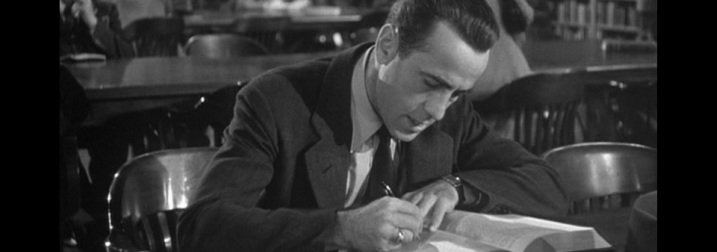Hard-boiled mysteries typically take place in the city with a loner detective who is this side of broke. The hard-boiled detective will face getting assaulted, kidnapped or even murdered to achieve justice. Expect violence, gritty language and possibly graphic sex (some writers who are happy with gore pull the curtain when the romance gets too hot.) Even though morality is ambiguous in a hard-boiled story, justice will prevail.
Not necessarily so with noir mysteries. Noir dwells at the far end of hard-boiled. The purest noir stories are told from the criminal’s point of view. Fate plays an important role, and there’s never a happy ending.
Soft-boiled mysteries are strictly small town. The reader won’t get a glimpse of the murder victim. If there’s violence beyond the murder (and often there isn’t) it will happen off-page. Soft-boiled characters don’t swear or use slang. When the characters have sex it’s so off the page, it happens in a different part of the library.
Just as noir stories dwell at the far end of hard-boiled stories, the cozy dwells at the far end of soft-boiled. The great aunt of the cozy is Miss Marple, and just as she had her knitting, the modern cozy sleuth has her cats, her catering business, or her ability to feng shui her solution to the murder.
Noir to cozy detectives exist on a spectrum with stories falling between hard-boiled and soft-boiled. Aren’t you a little curious what I write? Hard-boiled. Definitely.





 Hi Everyone,
Hi Everyone, No, this is not a blog post about Harry Potter as Allen Ginsberg. This is the admonishment attributed to Arthur Quiller-Couch to aspiring writers: “Whenever you feel the an impulse to perpetrate a piece of exceptionally fine writing, obey it—whole-heartedly—and delete it before sending your manuscripts to press. Murder your darlings.”
No, this is not a blog post about Harry Potter as Allen Ginsberg. This is the admonishment attributed to Arthur Quiller-Couch to aspiring writers: “Whenever you feel the an impulse to perpetrate a piece of exceptionally fine writing, obey it—whole-heartedly—and delete it before sending your manuscripts to press. Murder your darlings.” There’s a reason why so many famous writers advise us to write every day. My sweetie and I just got back from a marvelous 3 week vacation during which time I didn’t cook a meal or write a word. Now that we’re back home, I’m working mightily to finish my second Lennox Cooper mystery, Betting Blind, by early next summer.
There’s a reason why so many famous writers advise us to write every day. My sweetie and I just got back from a marvelous 3 week vacation during which time I didn’t cook a meal or write a word. Now that we’re back home, I’m working mightily to finish my second Lennox Cooper mystery, Betting Blind, by early next summer. Elmore Leonard, the Dickens of Detroit, died August 20th at the age of 87. The beloved writer was working on his 46th novel when he suffered from a stroke a month ago.
Elmore Leonard, the Dickens of Detroit, died August 20th at the age of 87. The beloved writer was working on his 46th novel when he suffered from a stroke a month ago. “I am against female detectives on principle. It’s not always and everywhere a tough game, but most of the time it is, with no room for the friendly feelings and the nice little impulses. So a she-dick must have a good thick hide, which is not a skin I’d love to touch; if she hasn’t, she is apt to melt just when a cold eye and hard nerves are called for, and in that case she doesn’t belong.” Archie Goodwin from Too Many Detectives, by Rex Stout
“I am against female detectives on principle. It’s not always and everywhere a tough game, but most of the time it is, with no room for the friendly feelings and the nice little impulses. So a she-dick must have a good thick hide, which is not a skin I’d love to touch; if she hasn’t, she is apt to melt just when a cold eye and hard nerves are called for, and in that case she doesn’t belong.” Archie Goodwin from Too Many Detectives, by Rex Stout